- Top Spanx Alternatives Worth Trying - June 18, 2025
- Zola vs The Knot: Which Registry is Better Today? - December 8, 2023
- Zola vs Amazon Registry: Which Has the Edge in 2024? - November 30, 2023
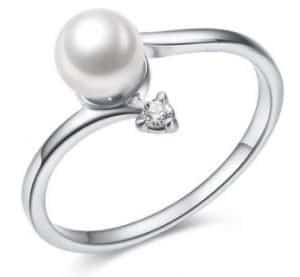
Combining the simple elegance of nature with the rich history of wedding jewelry, pearls are an obvious option for brides and grooms to be. Collected from pearl oysters and mollusks, pearls are a highly coveted and unique addition to any wedding band.
You’ve seen the fish in the sea and found yours – now it’s time to find your perfect pearl. Before cashing in all your (sea)dollars, it is important to be well versed in the pearl itself and all the factors that go into buying a pearl ring, ownership of a pearl ring, and its upkeep.
Understanding Pearls – Pearl Rings and More!
Properties – What is the Color of Pearls?
Pearls are best known for their perfectly round shape and their lustrous sheen – they come in a variety of sizes and colors, leaving the bride or groom to be with plenty of room for variety. Rather than overwhelming you with a list of useless knowledge, we will narrow the important factors down to two simple components of Pearls that we find most useful to the average consumer.
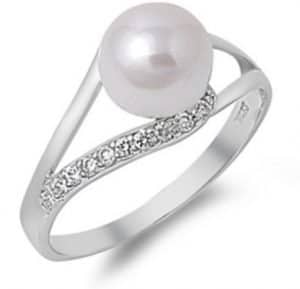
First, Pearls are relatively fragile. On the hardness scale, pearls are found at a comparatively low 3.5-4, and as such, are only scratch resistant to matter that falls at a lower number. To test the authenticity of a pearl, scratch the surface with an item that is in the 1-3 range of the hardness scale – a fingernail, for example, sits at a low 2 – if your nail leaves a scratch on the pearl, the pearl isn’t authentic.
If you’re well versed in testing specific gravity, the specific gravity of pearls is between 2.6 and 2.8. If none of that made sense to you, don’t worry, it doesn’t to the majority of consumers. A quick Google search will turn up easy to follow steps on testing for specific gravity and, if you’re unconvinced as to the authenticity of your pearl, they may make for a useful experiment.
Plenty of Pearl Rings
Just like fish, there are plenty of pearls in the world. Knowing the difference between the variety of pearls before you step foot into a jeweller will give you an advantage – you will be prepared to ask the right questions and know the prices of the differing pearl varieties.
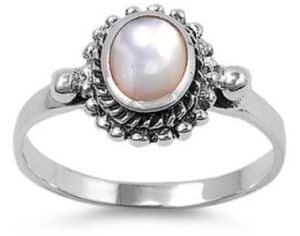
Natural Pearls – Natural pearls are highly sought after and very expensive. Natural pearls are exactly what they sound like, natural. These pearls come straight from a wild mollusk or oyster and are sold with no human manipulation. Natural pearls are extremely rare.
Cultured Pearls – Cultured pearls, like natural pearls, also come directly from mollusks and oysters. Unlike the mollusks and oysters from which we get natural pearls, though, cultured pearls are collected from pearl farms. A pearl farm is an unnatural habitat for mollusks and oysters in which a pollutant is added to the water to force the creation of pearls.
Saltwater Pearls – As the name might suggest, saltwater pearls are created by mollusks and oysters that live in saltwater. While finding a pearl that is both saltwater and natural is extremely rare, some pearl farms choose to take the saltwater approach. Unlike freshwater pearls, saltwater mollusks and oysters only produce one pearl each, making these a much rarer pearl than their freshwater counterpart.
Akoyo Pearls are saltwater pearls from Japan and China. They have a broad color range extending from whites and creams to rose and blue. They vary in size and can get as small as 2mm and as big as 10mm. akoyo pearls, in terms of cost, are “middle of the road” – they are a great place to start for shoppers first familiarizing themselves with pearls.
Cortez Pearls are also saltwater pearls but have a steeper price tag than Akoyo pearls. Cortez pearls come from California and range in color from white to silver, bronze and black. Cortez colors don’t come in unique shades like pink or blue.
Tahitian pearls sit in the “highly priced” end of the saltwater pearl spectrum. These come from French Polynesian islands. A portion of pearls naturally come in a remarkable iridescent shade.
The most expensive saltwater pearl is the South Sea pearl. South Sea pearls come me from Australia and Indonesia. At 20mm, South Sea pearls grow to be the largest of all pearls, while also maintaining their position to be the most evenly round and flawless of the bunch.
Freshwater Pearls
Freshwater Pearls are, as their name suggests, cultured or naturally developed in Freshwater. Freshwater Pearls are more readily available than saltwater pearls due to a freshwater mussels ability to create as many as twenty pearls!
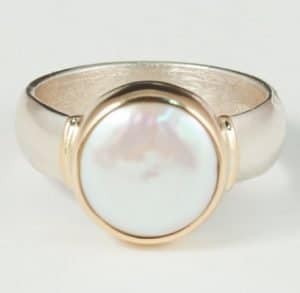
Freshwater Pearls come from all over the world and are capable of developing the colors of all the other pearls. Unfortunately, as a result of the ease with which freshwater pearls can be cultured, these are the lowest priced pearls in the pearl kingdom.
Kasumiga Pearls are a pricier variation of freshwater pearls. Kasumiga pearls come from Lake Kasumiguara in Tokyo and come in a variety of hues including pink and purple.
Imperfections In Pearls
Sometimes when a pearl is cultured the farmer might be surprised to find a variety of dings, dents and blemishes. In an attempt to perfect the pearls faults, the farmer will saw them down until he sees them as sellable. These pearls are called half pearls.
In separate instances, a pearl will implant itself to its vessel. This implantation results in a flat surface on the side of the pearl that was implanted. This type of pearl is called a blister pearl. Some blister pearls will have a hole in them as a result of the methods used to implant the irritant that formed them – these pearls are called Maybe balls and should be avoided when shopping for wedding and engagement rings.
Pearl Enhancements
While the most valuable pearls are unaltered, some of the less expensive varieties demand a the human touch to become sellable and appealing.
The most common enhancement is bleaching – this makes an unevenly shaded or blemished Pearl lighter and more uniform in color.
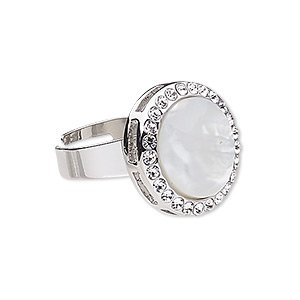
Opposite of bleach is radiation. Radiation is used to darken pearls to shades that mirror those of South Sea Pearls. This enhancements allows the consumer the option of buying a Pearl with the same mysticism and beauty of a South Sea Pearl without the same agonizing price tag.
Another method used to enhance pearls is dye. Pearls are extremely porous and readily take on the colors that they are introduced to – this allows for them to be dyed to a hue that is in demand at the time of sale.
Caring for your Pearl Rings
Pearls are extremely fragile. Unless a cleaner specifies that it is safe for pearls, it shouldn’t be used. Pearls shouldn’t be exposed to any household chemicals, even something as commonplace as Windex. Do not take your pearl ring with you when you go swimming in a chlorinated pool and remove it before applying lotions and makeup.
Store your pearls in soft pouches to protect them from contacting potentially deteriorating metals. When washing your pearls, only wash them with a soft clothe – do not use anything coarse or bristled.
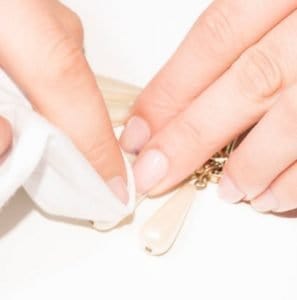
Cost
It is essentially impossible to gauge the price of pearls considering the large variety of them. Several factors will contribute to the price tag attached to your dream pearl. The rarity of the pearl with follow the economic example of supply and demand – the harder the pearl is to get, the more expensive it is.
The appearance of the pearl will also play a crucial role in its price. A symmetrically round pearl will cost you more than its asymmetrical counterpart, a pearl with a high sheen will be more expensive than one that is dull, and a big Pearl will be more valuable than a small one.
To reiterate previous sentiments, enhancement will decrease the value of a pearl while natural pearls are significantly higher in price than cultured ones.
Shopping Tips
1. Unlike diamonds and some gems, you won’t be able to go into a jeweller and demand pearls that meet certain certifications as there is no certification standard for them. Rather than searching for certifications, focus on the points mentioned within this article – color, symmetricity, smoothness, size and origin.
2. Purchase from a reputable jeweller who is knowledgeable on pearls. Pearls come in many different forms, shapes, and sizes – go into the experience with diligence and you will be able to easily decipher the jewellers that know their stuff from the jewellers that are faking it.
RELATED VIDEOS
